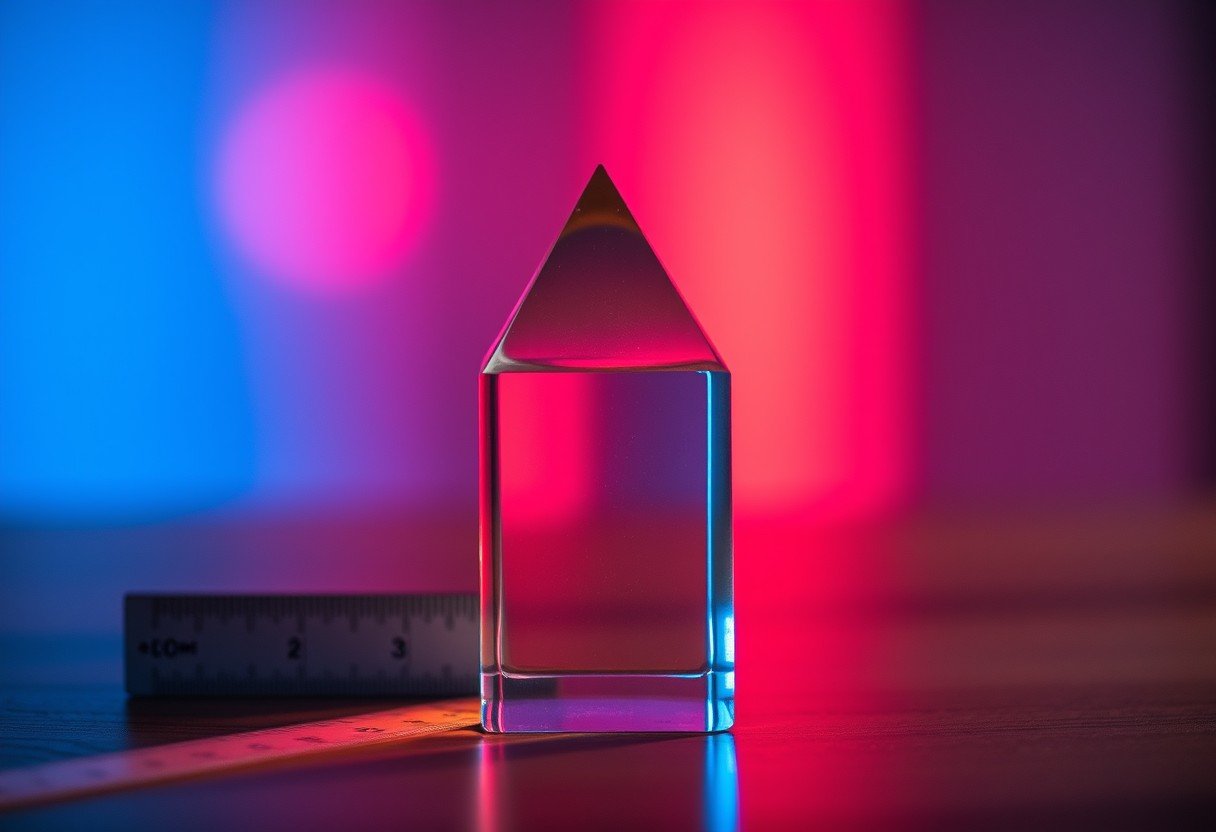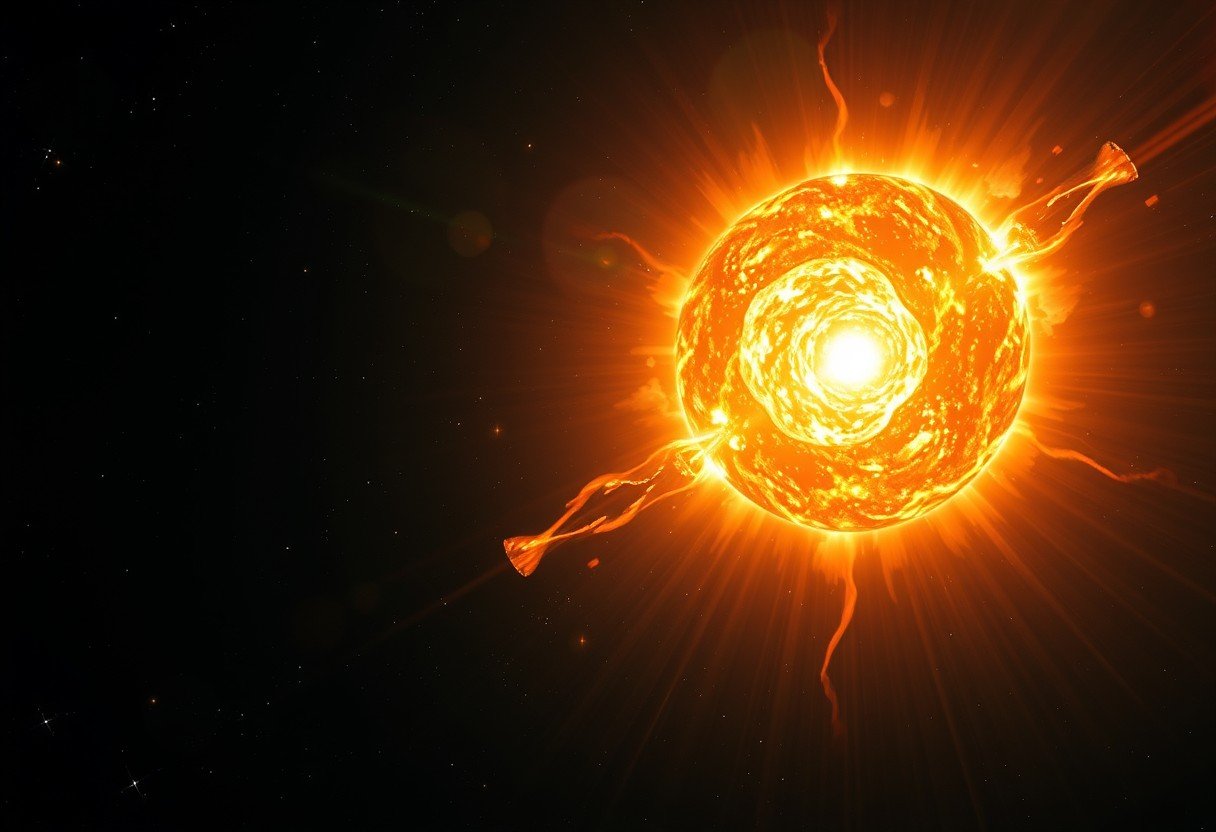Have you ever wondered why a prism splits white light into a beautiful rainbow? The answer lies in a fascinating secret: not all colors of light travel at the same speed through materials like glass. When passing through crown glass, red light actually moves faster than blue light. This article explores the simple science behind this phenomenon, explaining how wavelength and refraction determine the speed of light and create the optical effects we see every day.
What Determines the Speed of Light in Materials?
In the vast emptiness of a vacuum, all colors of light travel at the same incredible speed, approximately 299,792 kilometers per second. This is the universe’s ultimate speed limit. However, the story changes dramatically when light enters a medium like water, plastic, or glass.
When light passes through a transparent material, it interacts with the atoms within that substance. This interaction causes the light to slow down. The amount it slows down depends on two key factors: the properties of the material itself and the color, or wavelength, of the light.
This change in speed is the reason light bends, a phenomenon known as refraction. Denser materials generally slow light down more, causing it to bend more sharply. This fundamental principle is the basis for how lenses, prisms, and our own eyes work.
The Role of Wavelength and Refractive Index
To understand why red and blue light travel at different speeds, we need to look at their unique properties. Light travels in waves, and the distance between the peaks of these waves is called the wavelength. Different colors have different wavelengths.
The refractive index of a material is a number that tells us how much it slows down light. A higher refractive index means light travels slower. Crucially, the refractive index of crown glass is not the same for all colors of light.
Materials like crown glass have a slightly higher refractive index for shorter wavelengths of light. This wavelength-dependent property is what causes the separation of colors.
- Red Light has a longer wavelength.
- Blue Light has a shorter wavelength.
Because blue light has a shorter wavelength, it interacts more with the particles in the glass. This increased interaction leads to a higher refractive index and, consequently, a slower speed.
Why Red Light Travels Faster in Crown Glass
Red light, with its longer wavelength, behaves differently. As it passes through crown glass, its long waves interact less frequently with the atoms of the glass compared to the shorter waves of blue light.
This reduced interaction means that crown glass has a lower refractive index for red light. According to the formula for calculating the speed of light in a medium (Speed = Speed of Light in Vacuum / Refractive Index), a lower refractive index results in a higher speed.
Therefore, red light experiences less bending and travels faster through crown glass than blue light. This is the simple reason why it comes out of a prism at a different angle than blue light.
How Blue Light Gets Slowed Down
Blue light’s journey through crown glass is a bit slower. Its shorter wavelength and higher frequency cause it to interact more intensely with the glass structure. This greater interaction is what gives crown glass a higher refractive index for blue light, typically around 1.52.
Using the speed formula, we can see the effect. If we divide the speed of light in a vacuum (299,792 km/s) by the refractive index for blue light (1.52), we find that blue light slows down to approximately 197,000 km/s inside the glass. This significant reduction in speed causes it to bend more sharply than red light.
Comparing Red and Blue Light Side-by-Side
The differences in how red and blue light behave in crown glass are central to many optical technologies. Understanding these distinctions helps engineers design better lenses and other instruments. The table below provides a clear summary of these differences.
| Aspect | Red Light | Blue Light |
| Wavelength | Longer | Shorter |
| Refractive Index in Crown Glass | Lower | Higher |
| Speed in Crown Glass | Faster | Slower |
| Amount of Bending (Refraction) | Less | More |
This table clearly shows the inverse relationship between wavelength and refractive index, which directly impacts the speed of light through the material.
Practical Effects: Rainbows and Blurry Images
The varying speeds of different colors of light in glass lead to a phenomenon called dispersion. This is exactly what you see when a prism creates a rainbow. As white light enters the prism, each color slows down by a different amount, causing them to bend at slightly different angles and spread out into a full spectrum.
While beautiful in a rainbow, this effect can be a problem in optics. In cameras, telescopes, and microscopes, dispersion can cause something called chromatic aberration. Chromatic aberration occurs when different colors of light focus at different points, resulting in a blurry image with colored fringes around the edges.
Optical engineers combat this by designing complex lenses made of different types of glass (like crown and flint glass) that work together to correct for dispersion and bring all the colors back into sharp focus.
Frequently Asked Questions
Which color of light travels faster in crown glass, red or blue?
Red light travels faster in crown glass. This is because red light has a longer wavelength, which results in a lower refractive index and less resistance as it moves through the material compared to blue light.
What is the refractive index and how does it affect light?
The refractive index is a measure of how much a material slows down and bends light. A higher refractive index means light travels slower and bends more. In crown glass, the refractive index is higher for shorter wavelengths (blue light) and lower for longer wavelengths (red light).
How does this speed difference create a rainbow?
This speed difference is responsible for dispersion. When white light enters a prism, each color slows down by a different amount. Blue light slows down the most and bends the most, while red light slows down the least and bends the least, causing the colors to separate into a visible spectrum or rainbow.
Why is this important for camera lenses?
In camera lenses, this speed difference can cause chromatic aberration, where colors don’t focus at the same point, leading to blurry images with color fringes. Lens designers use multiple lens elements made of different materials to correct this issue and ensure images are sharp and clear.
Does temperature affect the speed of light in glass?
Yes, temperature can slightly alter the speed of light in glass. A change in temperature can change the density and structure of the glass, which in turn affects its refractive index. However, the rule that red light travels faster than blue light remains true under normal conditions.









Leave a Comment